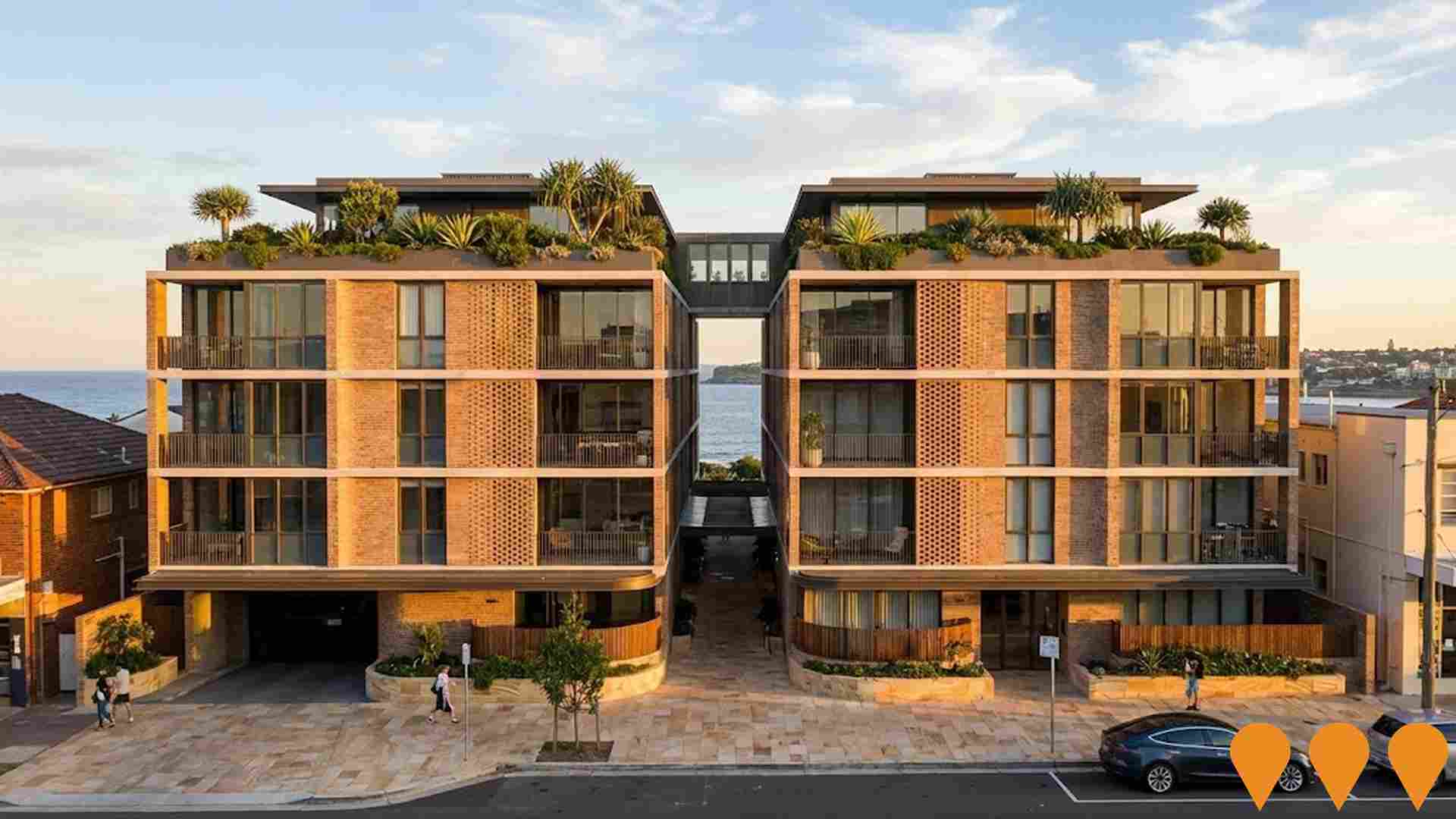Chart Color Schemes
est. as @ -- *
ABS ERP | -- people | --
2021 Census | -- people
Sales Activity
Curious about local property values? Filter the chart to assess the volume and appreciation (including resales) trends and regional comparisons, or scroll to the map below view this information at an individual property level.
Find a Recent Sale
Sales Detail
Population
An assessment of population growth drivers in Maroubra - South reveals an overall ranking slightly below national averages considering recent, and medium term trends
Maroubra - South's population is approximately 11,580 as of August 2025. This figure represents an increase of 496 people since the 2021 Census, which reported a population of 11,084. The growth is inferred from ABS estimates and validated new addresses between June 2024 and the Census date. The population density stands at 5,621 persons per square kilometer, placing Maroubra - South in the top 10% of national locations assessed by AreaSearch. Over the past decade, ending in June 2024, Maroubra - South has shown a compound annual growth rate of 0.1%, outperforming its SA3 area. Overseas migration contributed approximately 78.3% to recent population gains.
AreaSearch's projections for Maroubra - South are based on ABS/Geoscience Australia data released in 2024, with a base year of 2022. For areas not covered by this data, NSW State Government's SA2 level projections from 2022, using the 2021 base year, are applied. Growth rates by age group for years 2032 to 2041 are also used. Based on current demographic trends and latest population numbers, Maroubra - South is expected to grow by approximately 1,235 persons by 2041, representing a total increase of about 10.4% over the 17-year period.
Frequently Asked Questions - Population
Development
AreaSearch analysis of residential development drivers sees Maroubra - South recording a relatively average level of approval activity when compared to local markets analysed countrywide
Maroubra - South has recorded approximately 32 residential properties granted approval annually over the past five financial years, totalling 160 homes. As of FY-26, 5 approvals have been recorded. On average, 1.5 people moved to the area per dwelling built between FY-21 and FY-25, indicating balanced supply and demand. However, this figure has increased to 4.9 people per dwelling over the past two financial years, suggesting growing popularity and potential undersupply. New properties are constructed at an average expected cost of $686,000, slightly above the regional average.
This year, $3.4 million in commercial approvals have been registered, reflecting the area's primarily residential nature. Compared to Greater Sydney, Maroubra - South maintains similar construction rates per person, preserving market equilibrium with surrounding areas. This rate is below national averages, suggesting maturity and possible planning constraints. Building activity shows 12.0% standalone homes and 88.0% townhouses or apartments, favouring higher-density living for affordability and suitability for downsizers, investors, and first-home buyers. Maroubra - South has a population density of around 316 people per approval, reflecting a low-density area.
Population forecasts indicate the area will gain 1,201 residents by 2041. Building activity is keeping pace with growth projections, but increased competition among buyers is expected as the population grows.
Frequently Asked Questions - Development
Infrastructure
Maroubra - South has very high levels of nearby infrastructure activity, ranking in the top 20% nationally
Changes to local infrastructure significantly impact an area's performance. AreaSearch has identified 13 projects that may affect this area. Notable projects include Google Pacific Connect - Tabua and Honomoana Cable Landing Infrastructure, Yorktown Parade and Fitzgerald Avenue Affordable Housing Redevelopment, Royale Randwick Terraces, and Adela 138 Maroubra Road. The following list details those most likely to be relevant.
Professional plan users can use the search below to filter and access additional projects.
INFRASTRUCTURE SEARCH
 Denotes AI-based impression for illustrative purposes only, not to be taken as definitive under any circumstances. Please follow links and conduct other investigations from the project's source for actual imagery. Developers and project owners wishing us to use original imagery please Contact Us and we will do so.
Denotes AI-based impression for illustrative purposes only, not to be taken as definitive under any circumstances. Please follow links and conduct other investigations from the project's source for actual imagery. Developers and project owners wishing us to use original imagery please Contact Us and we will do so.
Frequently Asked Questions - Infrastructure
Sydney Metro Eastern Suburbs Extension
A strategic future extension of the Sydney Metro network (likely Metro West) to the south-eastern suburbs. Identified in the 'South East Sydney Transport Strategy' to 2056, the corridor proposes connecting the CBD/Hunter Street to Zetland (Green Square), Randwick, Maroubra, and La Perouse. The project aims to alleviate capacity constraints on the existing light rail and bus networks and support high-density residential growth in the Green Square precinct.
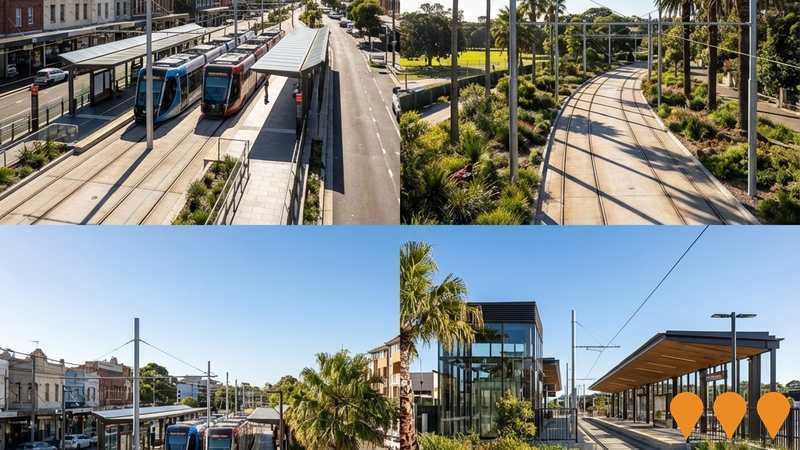
Sydney Children's Hospital Stage 1 & Minderoo Children's Comprehensive Cancer Centre
A $658 million redevelopment delivering a new 12-storey children's hospital and the Minderoo Children's Comprehensive Cancer Centre, integrating world-leading clinical care, research, and education. Features include 200 beds, expanded emergency department, neurosciences centre, and advanced paediatric cancer facilities. Construction is complete, with commissioning underway and opening to patients expected in late 2025.
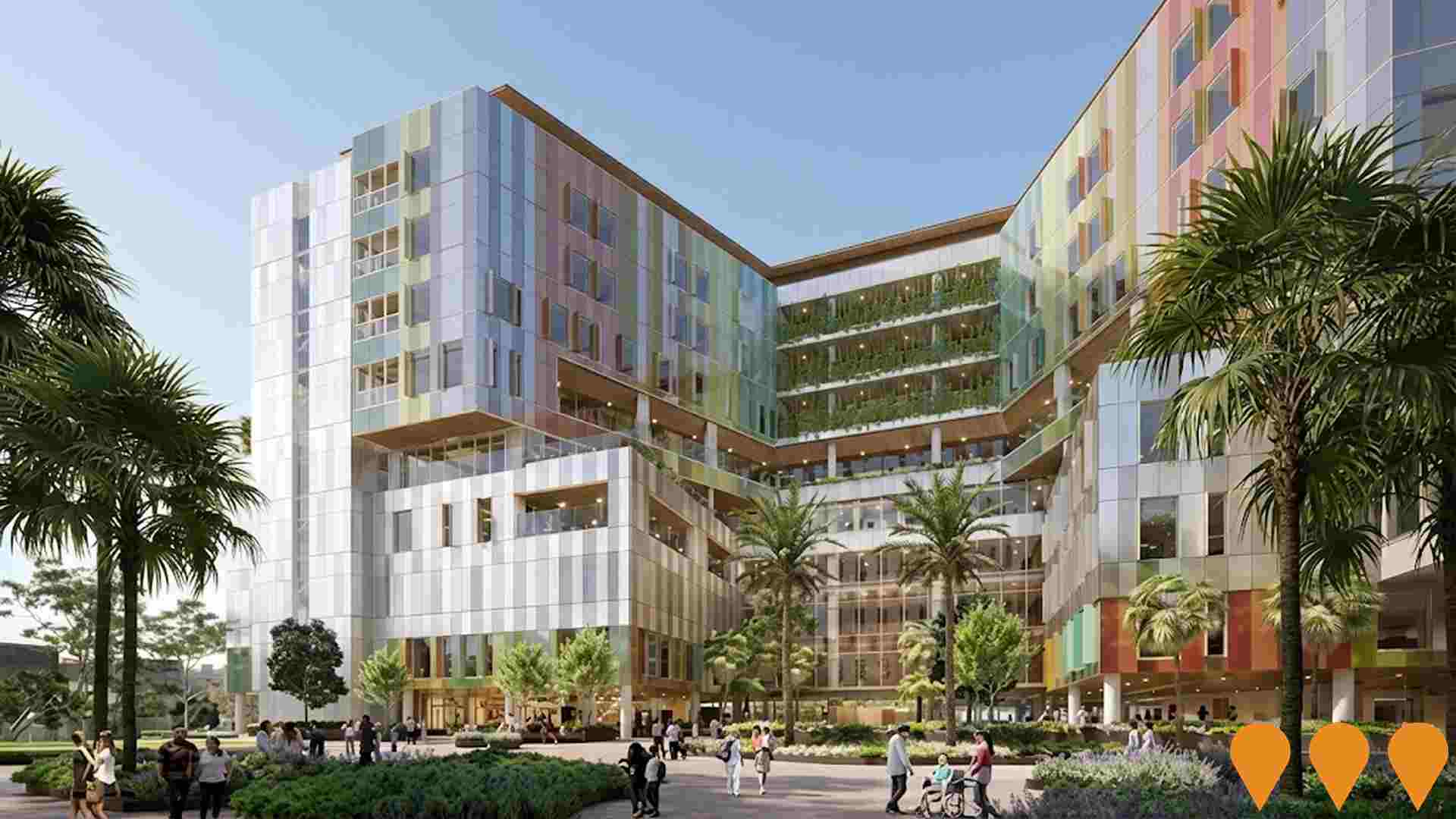
Port Botany Expansion & Rail Duplication
Major upgrade of NSW container trade capacity combining the Port Botany Expansion and the Port Botany Rail Line Duplication. The expansion delivered about 60 ha of reclaimed land, a 1.85 km wharf with five berths, new terminal areas, and on-dock rail, adding a third container terminal and lifting long term capacity. The rail duplication, commissioned in early 2024, duplicated the remaining 2.9 km Mascot to Botany section and, together with the Cabramatta Loop, increases freight capacity and reduces truck reliance to and from the port.
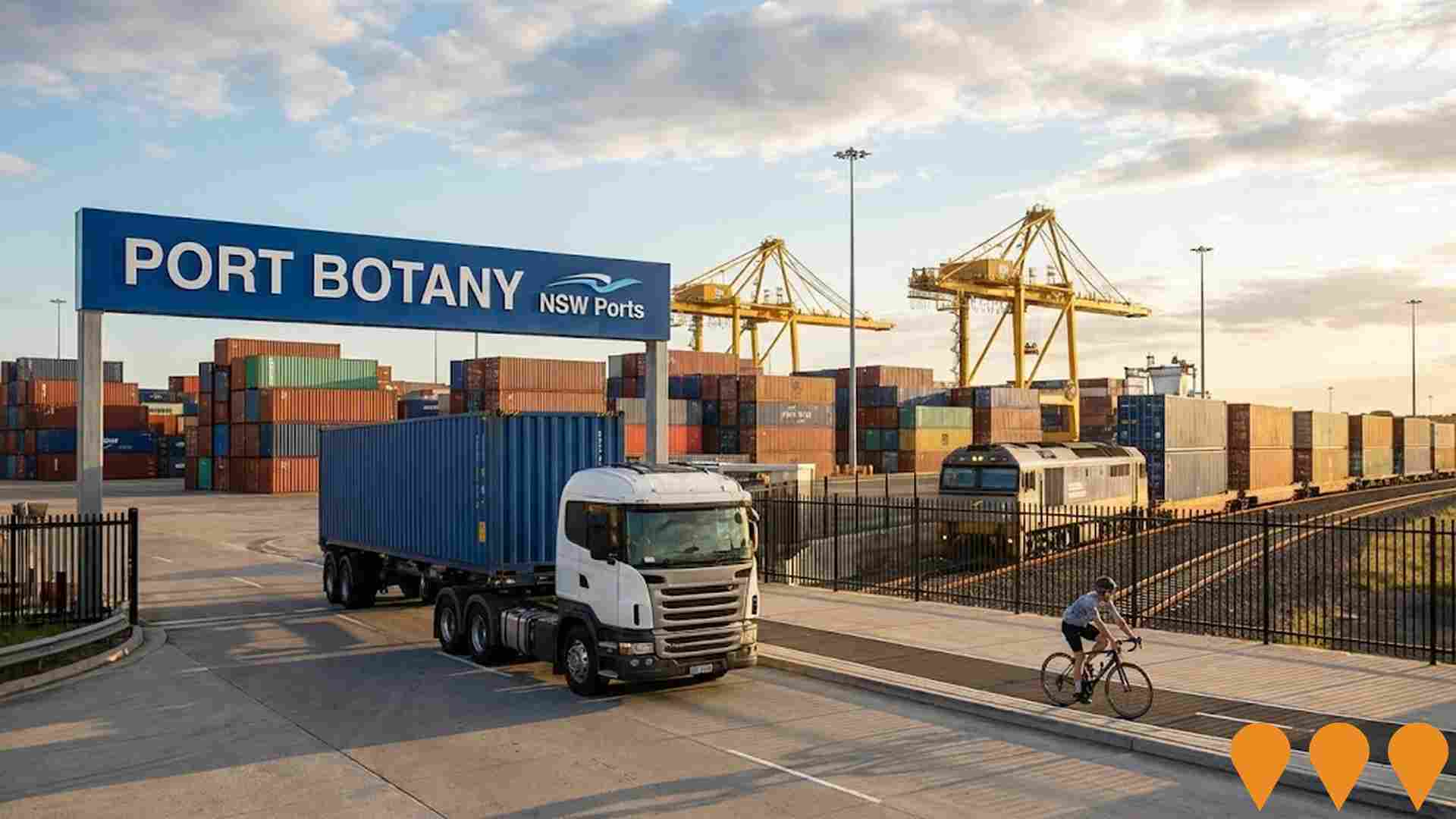
Google Pacific Connect - Tabua and Honomoana Cable Landing Infrastructure
Major subsea cable landing infrastructure for Google's Pacific Connect Initiative, supporting the Tabua and Honomoana transpacific cables connecting Australia to the United States, Fiji, and French Polynesia. Developed through Google's Perch Infrastructure in partnership with SUBCO, this project enhances digital resilience and international connectivity for Sydney and Australia. Construction includes horizontal directional drilling and shared landing infrastructure at Maroubra Beach.
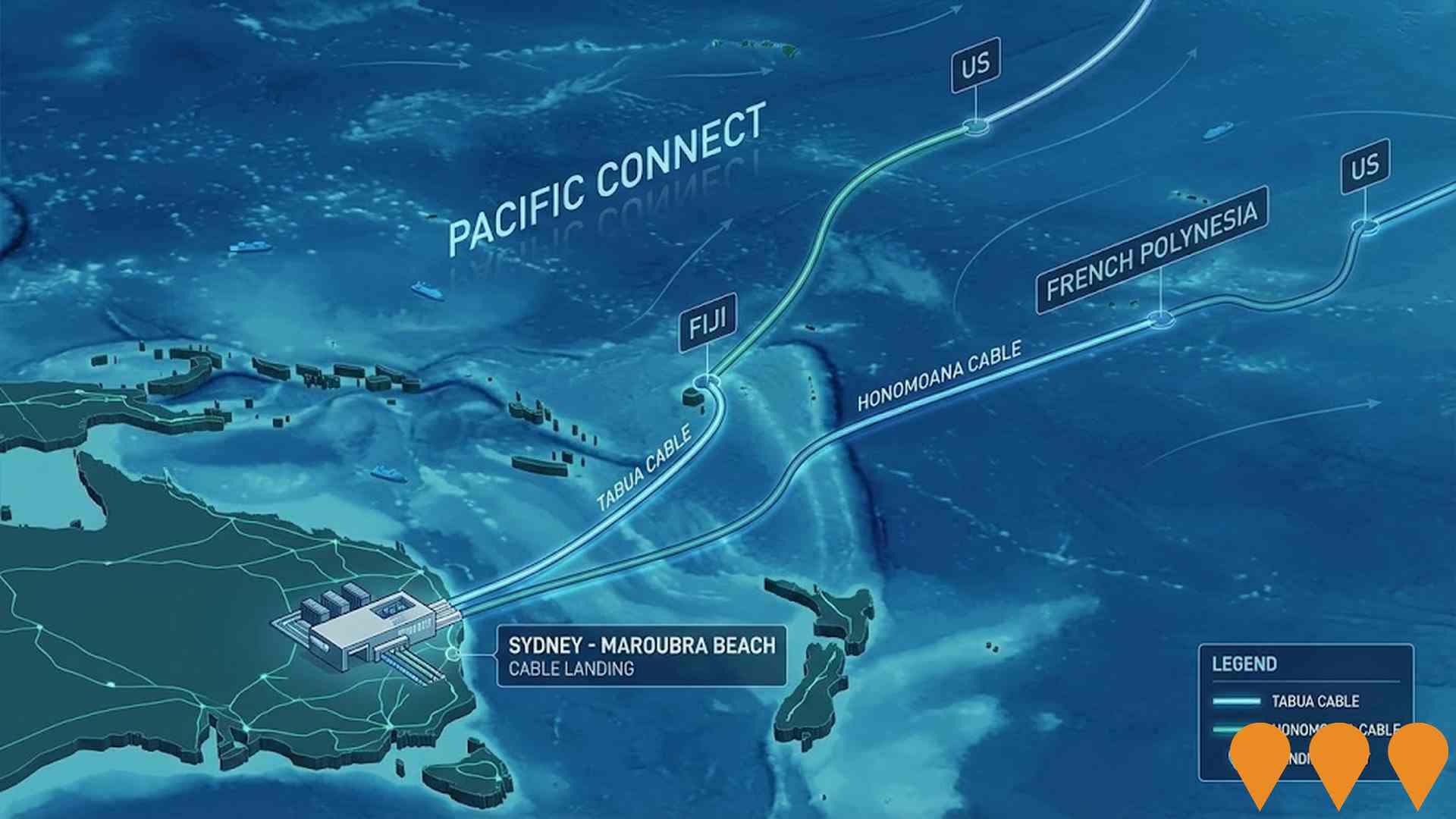
Heffron Centre
State-of-the-art community sporting facility featuring indoor sports halls for netball, basketball, badminton, volleyball and futsal, dedicated gymnastics and dance centre, South Sydney Rabbitohs high-performance training centre and community programs hub. The facility includes public cafe, merchandise shop, hall of fame and NRL standard showcase field. Completed in May 2023 after 10 years in planning.
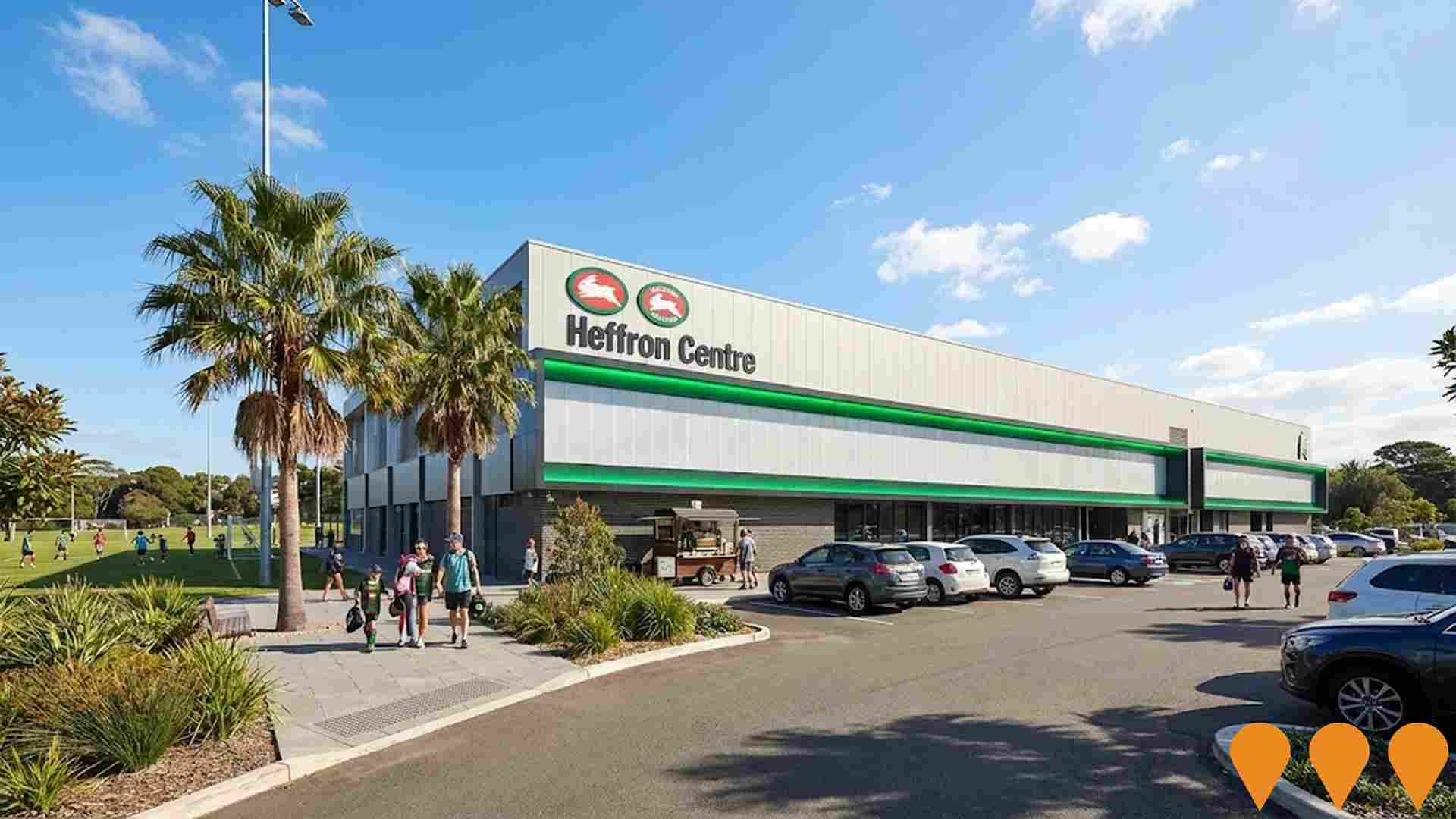
Yorktown Parade and Fitzgerald Avenue Affordable Housing Redevelopment
NSW Government affordable housing redevelopment replacing existing 33 three-bedroom dwellings with 144 new units in 6 apartment buildings (4 x 3-storey and 2 x 3-4-storey). The development includes 94 affordable homes and 50 social housing homes, with 77 parking spaces, common room and landscaped areas.
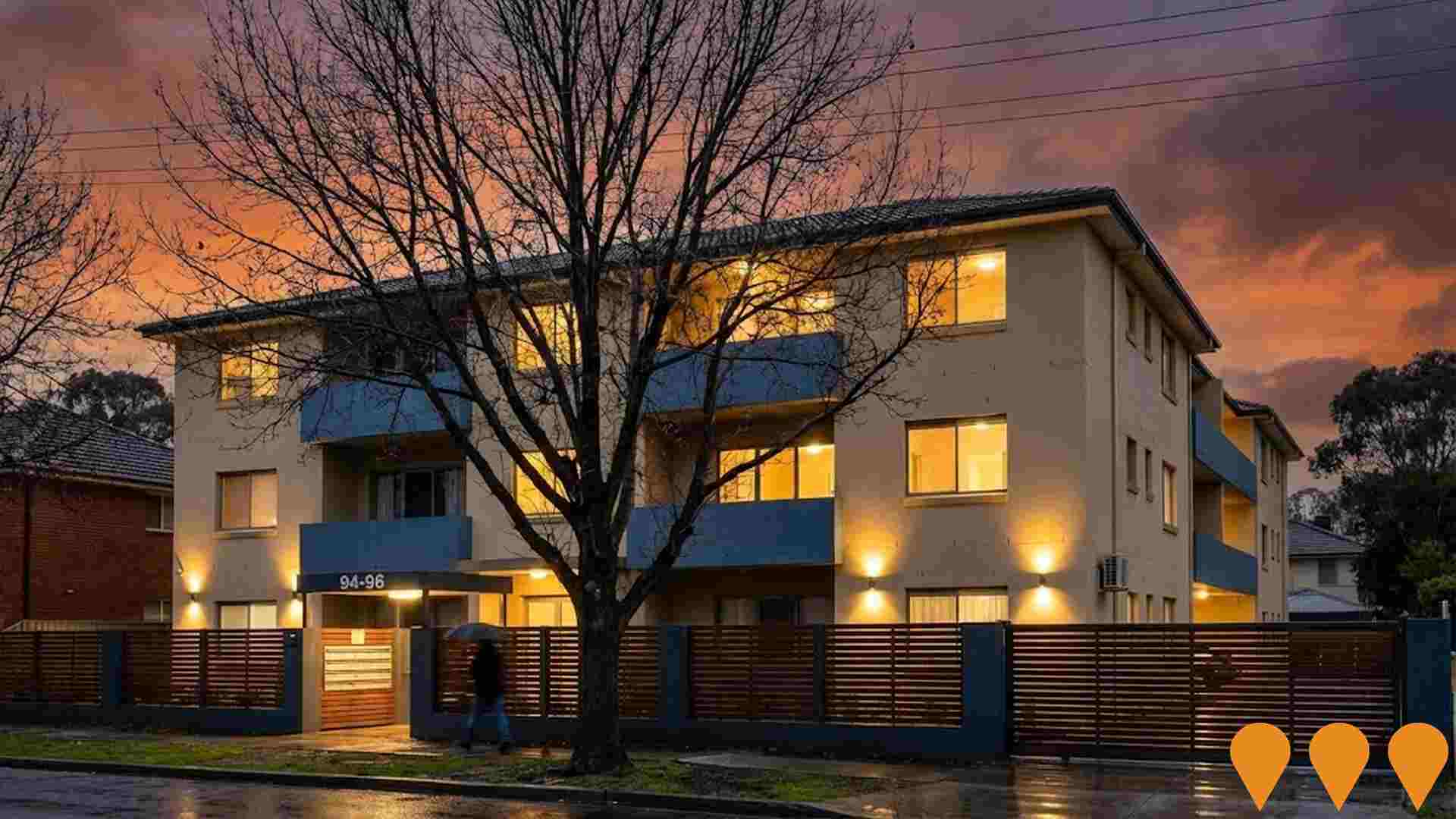
Light Rail Extension to Maroubra Junction
Proposed extension of Sydney's light rail network from Kingsford to Maroubra Junction along Anzac Parade, aiming to improve public transport connectivity to the eastern beaches and support urban development along the corridor.
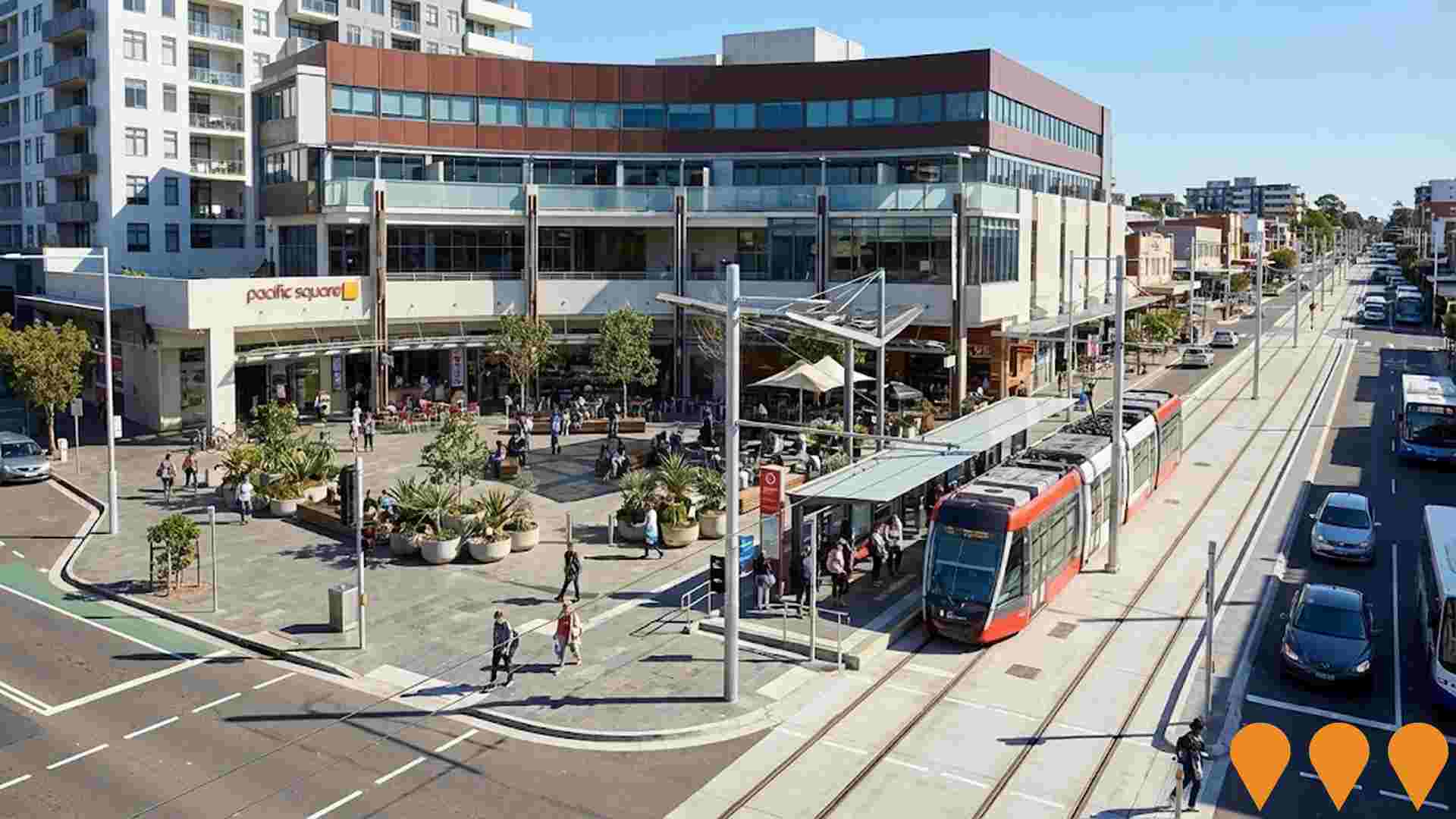
Maroubra Road and Flower Street Roundabout
The project involves the construction of a new roundabout at the intersection of Maroubra Road and Flower Street to improve traffic flow and safety for drivers, pedestrians, and cyclists. This upgrade is one of four key road safety projects in Randwick City funded through a grant from Transport for NSW. The works are managed by Randwick City Council and are scheduled to be implemented following safety improvements at the nearby intersection of Maroubra Road and Mons Avenue.

Employment
Employment drivers in Maroubra - South are experiencing difficulties, placing it among the bottom 20% of areas assessed across Australia
Maroubra - South has a highly educated workforce with strong professional services representation. The unemployment rate in June 2025 was 9.2%.
Employment growth over the past year was estimated at 3.3%. As of June 2025, 6,083 residents were employed, with an unemployment rate of 5.0%, above Greater Sydney's rate of 4.2%. Workforce participation was similar to Greater Sydney's 60.0%. Key industries included health care & social assistance, professional & technical services, and education & training, with notable concentration in the latter at 1.3 times the regional average.
Retail trade was under-represented, at 6.3% compared to Greater Sydney's 9.3%. Employment opportunities locally appeared limited based on Census data. Over the year to June 2025, employment increased by 3.3%, labour force by 2.4%, reducing unemployment by 0.8 percentage points. In contrast, Greater Sydney had employment growth of 2.6% and a 0.3 percentage point rise in unemployment. Jobs and Skills Australia forecasts national employment growth at 6.6% over five years and 13.7% over ten years. Applying these projections to Maroubra - South's employment mix suggests local growth of approximately 7.2% over five years and 14.4% over ten years, though this is a simplified extrapolation for illustrative purposes only.
Frequently Asked Questions - Employment
Income
Income analysis reveals strong economic positioning, with the area outperforming 60% of locations assessed nationally by AreaSearch
AreaSearch's latest postcode level ATO data for financial year 2022 indicates Maroubra - South's median income among taxpayers is $57,337. The average income in the area is $93,693. Nationally, this places Maroubra - South in the top percentile. In comparison, Greater Sydney's median income is $56,994 with an average of $80,856. Based on Wage Price Index growth of 12.61% since financial year 2022, current estimates for Maroubra - South would be approximately $64,567 (median) and $105,508 (average) as of September 2025. Census data reveals personal income ranks at the 76th percentile ($968 weekly), while household income sits at the 59th percentile. The earnings profile shows the $1,500 - 2,999 earnings band captures 25.5% of the community (2,952 individuals). This pattern is similar to the surrounding region where 30.9% occupy this range. Maroubra - South demonstrates affluence with 31.8% earning over $3,000 per week, supporting premium retail and service offerings. High housing costs consume 22.1% of income, but strong earnings place disposable income at the 51st percentile. The area's SEIFA income ranking places it in the 8th decile.
Frequently Asked Questions - Income
Housing
Maroubra - South features a more urban dwelling mix with significant apartment living, with a higher proportion of rental properties than the broader region
In Maroubra - South, as assessed in the latest Census, 20.1% of dwellings were houses while 79.9% consisted of other types such as semi-detached properties, apartments, and 'other' dwellings. In contrast, Sydney metropolitan area had 26.9% houses and 73.1% other dwellings. Home ownership in Maroubra - South stood at 23.9%, with mortgaged dwellings at 22.6% and rented ones at 53.4%. The median monthly mortgage repayment was $3,000, lower than Sydney metro's average of $3,033. Median weekly rent in Maroubra - South was $490, compared to Sydney metro's $550. Nationally, Maroubra - South's median monthly mortgage repayments were significantly higher at $1,863 and rents substantially above the national average of $375.
Frequently Asked Questions - Housing
Household Composition
Maroubra - South features high concentrations of lone person households and group households, with a lower-than-average median household size
Family households account for 62.2% of all households, including 25.9% couples with children, 23.4% couples without children, and 11.7% single parent families. Non-family households constitute the remaining 37.8%, with lone person households at 32.9% and group households comprising 4.9%. The median household size is 2.3 people, which is smaller than the Greater Sydney average of 2.4.
Frequently Asked Questions - Households
Local Schools & Education
Maroubra - South shows strong educational performance, ranking in the upper quartile nationally when assessed across multiple qualification and achievement indicators
Educational attainment in Maroubra - South is notably higher than national and state averages. As of 2021, 44.2% of residents aged 15 and above hold university qualifications, compared to 30.4% nationally and 32.2% in NSW. Bachelor degrees are the most common at 28.0%, followed by postgraduate qualifications (13.4%) and graduate diplomas (2.8%). Vocational credentials are also prevalent, with 26.1% of residents holding such qualifications – advanced diplomas account for 11.1% and certificates for 15.0%.
Educational participation is high, with 30.4% of residents currently enrolled in formal education. This includes 9.3% in primary education, 6.9% in secondary education, and 6.4% pursuing tertiary education. As of the 2020 census, Maroubra - South's five schools have a combined enrollment of 1,518 students. The area shows above-average socio-educational conditions with an ICSEA score of 1056. Educational provision is balanced, with three primary and two secondary schools serving distinct age groups.
Frequently Asked Questions - Education
Schools Detail
Nearby Services & Amenities
Transport
Transport servicing is high compared to other areas nationally based on assessment of service frequency, route connectivity and accessibility
Public transport analysis shows 64 active transport stops operating within Maroubra - South. These stops serve a mix of buses, with 33 individual routes providing service. The total weekly passenger trips across these routes is 5,472.
Transport accessibility is rated excellent, with residents typically located 94 meters from the nearest stop. Service frequency averages 781 trips per day across all routes, equating to approximately 85 weekly trips per individual stop.
Frequently Asked Questions - Transport
Transport Stops Detail
Health
Maroubra - South's residents are healthier than average in comparison to broader Australia with a fairly standard level of common health conditions seen across both young and old age cohorts
Health data shows Maroubra - South residents have relatively positive health outcomes, with common conditions seen across both young and old age groups. The rate of private health cover is high at approximately 68% (7,897 people), compared to Greater Sydney's 70.6%. Nationally, the average is 55.3%.
Mental health issues and arthritis are the most common medical conditions, impacting 7.6 and 7.1% of residents respectively. 72.4% declare themselves completely clear of medical ailments, compared to Greater Sydney's 76.0%. As of June 2021, 18.1% of residents are aged 65 and over (2,094 people), higher than Greater Sydney's 15.1%. Health outcomes among seniors are above average, broadly in line with the general population's health profile.
Frequently Asked Questions - Health
Cultural Diversity
Maroubra - South is among the most culturally diverse areas in the country based on AreaSearch assessment of a range of language and cultural background related metrics
Maroubra-South has a high cultural diversity, with 32.5% speaking a language other than English at home and 41.5% born overseas. Christianity is the main religion, comprising 52.2%. Judaism is overrepresented at 3.8%, compared to Greater Sydney's 0.4%.
The top three ancestry groups are English (19.6%), Australian (16.8%), and Other (15.1%). French (2.4%) Russian (1.4%), and Polish (1.4%) are notably overrepresented compared to regional percentages of 1.5%, 1.1%, and 1.1% respectively.
Frequently Asked Questions - Diversity
Age
Maroubra - South's population is slightly older than the national pattern
The median age in Maroubra - South is 40, which is higher than Greater Sydney's figure of 37 and Australia's figure of 38. Compared to Greater Sydney's average, the 35-44 cohort is notably over-represented at 16.4% locally, while the 15-24 age group is under-represented at 11.3%. Between 2021 and present, the percentage of the population aged 15 to 24 has grown from 9.1% to 11.3%, while the percentage of those aged 25 to 34 has declined from 15.8% to 15.0%. By 2041, demographic modeling suggests Maroubra - South's age profile will change significantly. The 65-74 age cohort is projected to expand by 261 people (26%) from 1,014 to 1,276. Notably, the combined 65+ age groups are expected to account for 53% of total population growth, reflecting the area's aging demographic profile. Meanwhile, the 0-4 and 35-44 cohorts are expected to experience population declines.


